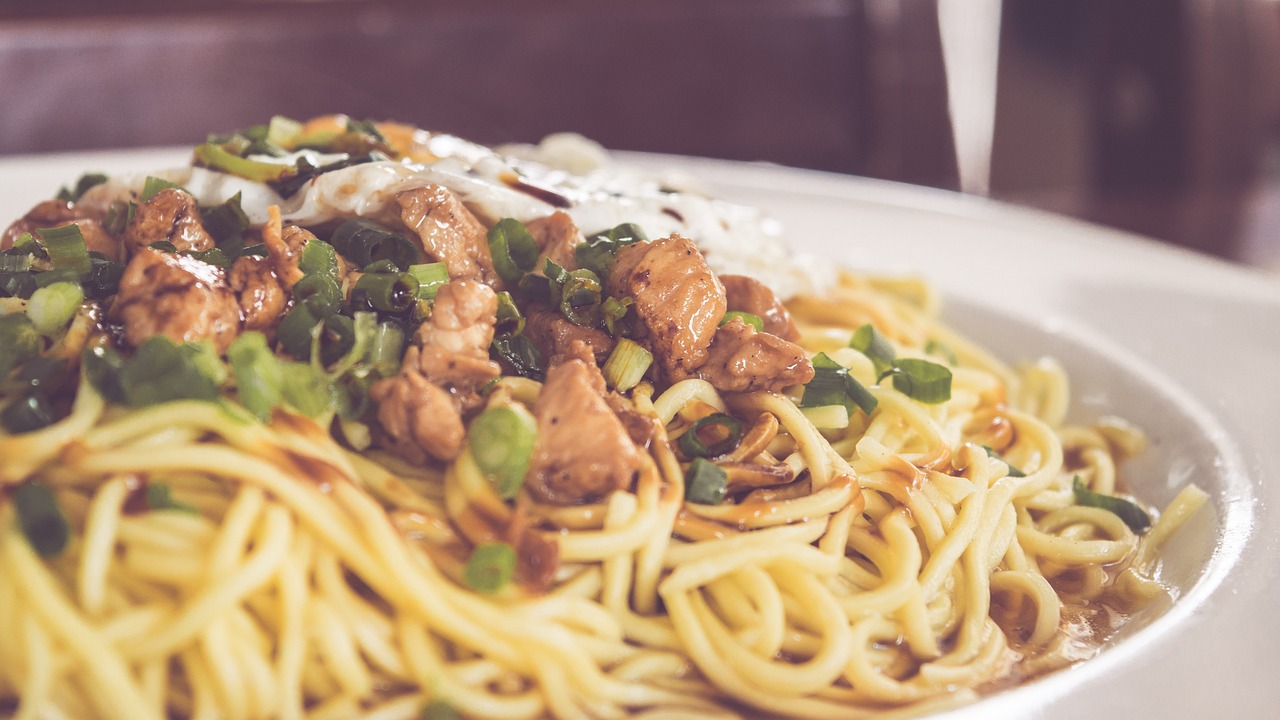In “The Perfect Stir-Fry: Techniques And Recipes,” Tastepan presents an array of expert cooking tips and techniques to help you master the art of stir-frying. With a focus on enhancing your culinary skills, this comprehensive guide provides step-by-step instructions and videos that will transform you into a kitchen pro. Whether you’re a beginner or a seasoned cook, get ready to explore the secrets behind creating the perfect stir-fry and discover a world of delicious recipes that will tantalize your taste buds.

Choosing the Right Ingredients
When it comes to making the perfect stir-fry, using the right ingredients is crucial. It is important to choose vegetables that are fresh and vibrant in color. Opt for a variety of vegetables to add both flavor and visual appeal to your stir-fry. Some excellent choices include bell peppers, broccoli, carrots, snap peas, and mushrooms. These vegetables provide a combination of crunchiness and tenderness that enhances the overall texture of the dish.
In addition to vegetables, selecting the perfect protein is key. The most common choices for stir-fry protein are chicken, beef, shrimp, and tofu. Choose lean cuts of meat and ensure they are sliced thinly for quick and even cooking. If you prefer a vegetarian or vegan option, tofu can be a great substitute for meat. It has a firm texture that absorbs flavors well and adds a satisfying element to the dish.
Lastly, choosing the right sauce and seasonings is vital. The sauce is what brings all the flavors together in a stir-fry. You can either choose a store-bought sauce or create your own using a combination of soy sauce, hoisin sauce, oyster sauce, and other seasonings. Experiment with different flavors and find the perfect balance of sweetness, saltiness, and tanginess that suits your taste buds.
Preparing Your Ingredients
Properly washing and drying the vegetables is an essential step in preparing your ingredients. This ensures that any dirt or residue is removed, and the vegetables are clean and safe to consume. Use cold water and gently rub the vegetables to remove any impurities. Once washed, pat them dry with a clean kitchen towel or paper towel to prevent excess moisture in the stir-fry.
Slicing and dicing techniques are crucial in stir-fry cooking. It is important to ensure that the vegetables and proteins are cut into uniform pieces to ensure even cooking. Julienne, dice, or slice the vegetables based on the recipe you are following. Take your time to carefully slice the proteins into thin, bite-sized pieces to maximize flavor absorption and minimize cooking time.
Marinating the protein is an optional step but can greatly enhance the flavor profile of your stir-fry. A simple marinade of soy sauce, garlic, ginger, and a touch of honey can infuse the protein with delicious flavors. Allow the protein to marinate for at least 30 minutes, or even overnight, to let the flavors penetrate the meat or tofu.

Mastering the Stir-Fry Techniques
To achieve the perfect stir-fry, mastering the techniques is crucial. Proper heat and wok selection play a significant role in the cooking process. It is recommended to use a wok as it provides even heat distribution and allows for quick cooking. A carbon steel wok is ideal as it heats up quickly and retains heat well.
Preheating and testing the wok is an important step in stir-fry cooking. Heat the wok over medium-high heat until it becomes smoking hot. To test if the wok is hot enough, flick a few drops of water onto the surface. If the water evaporates immediately with a sizzling sound, the wok is ready to be used. This technique ensures that the ingredients will cook quickly and maintain their crunchiness.
The essential stir-fry motion involves continuously tossing and flipping the ingredients in the wok. Use a long spatula or a pair of tongs to ensure that all the ingredients are well-mixed and evenly cooked. This motion prevents any sticking or burning and allows for even heat distribution. With practice, you will become comfortable with the motion and achieve the perfect stir-fry consistency.
The Perfect Stir-Fry Recipes
Now that you have mastered the techniques, it’s time to try out some delicious stir-fry recipes. Here are a few classic options to get you started:
Classic Vegetable Stir-Fry
This recipe is perfect for vegetarians or as a side dish to complement a protein-based stir-fry. Start by heating oil in the wok and add your choice of vegetables such as bell peppers, snap peas, carrots, and mushrooms. Toss them quickly in the wok until they are cooked but still retain their crunchiness. Add a homemade or store-bought stir-fry sauce of your choice, and serve it hot with steamed rice or noodles.
Savory Chicken Stir-Fry
For a classic chicken stir-fry, thinly slice boneless chicken breasts or thighs. Heat oil in the wok, add garlic and ginger for flavor, and then add the chicken. Stir-fry the chicken until it is golden brown and cooked through. Next, add your choice of vegetables such as broccoli, bell peppers, and carrots. Once the vegetables are tender-crisp, add a savory sauce made from soy sauce, oyster sauce, and a touch of honey. Serve this delicious chicken stir-fry over steamed rice for a complete meal.
Beef and Broccoli Stir-Fry
This popular stir-fry combines tender beef with crisp broccoli florets. Thinly slice a lean cut of beef, such as flank steak or sirloin, and marinate it in a mixture of soy sauce, garlic, and cornstarch. Heat oil in the wok and quickly sear the beef until it is browned. Remove the beef from the wok and add broccoli florets. Stir-fry the broccoli until it turns bright green and is tender-crisp. Return the beef to the wok, add a flavorful sauce made from soy sauce, oyster sauce, and ginger, and toss everything together. Serve this delicious beef and broccoli stir-fry over steamed rice or noodles.
Shrimp and Vegetable Stir-Fry
For seafood lovers, a shrimp and vegetable stir-fry is a great option. Peel and devein fresh shrimp and season them with salt and pepper. Heat oil in the wok and stir-fry the shrimp until they turn pink and are cooked through. Remove the shrimp from the wok and stir-fry your choice of vegetables, such as bell peppers, snap peas, and carrots. Return the shrimp to the wok, add a tangy sauce made from soy sauce, garlic, and lemon juice, and toss everything together. Serve this flavorful shrimp and vegetable stir-fry over steamed rice or noodles.
Tofu and Mushroom Stir-Fry
For a vegetarian or vegan option, tofu and mushroom stir-fry is a delicious choice. Cut tofu into bite-sized cubes and season with soy sauce and cornstarch. Heat oil in the wok and add the tofu cubes. Stir-fry until they are golden brown and crispy on the outside. Remove the tofu from the wok and stir-fry a variety of mushrooms, such as shiitake and oyster mushrooms. Once the mushrooms are tender, return the tofu to the wok and add a fragrant sauce made from soy sauce, garlic, and sesame oil. Serve this flavorful tofu and mushroom stir-fry over steamed rice or noodles.

Vegetarian and Vegan Options
Stir-fry dishes are easily adaptable to vegetarian and vegan diets. You can create flavorful veggie stir-fries by focusing on the variety and combination of vegetables. Be creative and experiment with different textures and flavors by including vegetables such as zucchini, eggplant, cauliflower, or bok choy. These vegetables provide a unique and satisfying taste to your stir-fry.
If you are looking to replace protein with plant-based alternatives, tofu is an excellent choice. It has a mild flavor that easily absorbs the flavors of the stir-fry sauce. You can also try using tempeh, seitan, or even plant-based meat substitutes. These alternatives offer a similar texture and taste to meat, making them suitable for vegan and vegetarian stir-fries.
Adding Depth of Flavor
To take your stir-fry to the next level, adding depth of flavor is key. Infusing aromatics and spices can transform a simple stir-fry into a flavorful dish. Garlic and ginger are commonly used aromatics that add a fragrant and savory note to the stir-fry. Along with these, you can add spices such as red pepper flakes, chili powder, or Chinese five-spice powder to enhance the flavor profile.
Using marinades and broths can also intensify the flavors in your stir-fry. Marinating the protein in a combination of soy sauce, garlic, and ginger for at least 30 minutes can infuse it with delicious flavors. You can also add a splash of broth, such as vegetable or chicken broth, to the stir-fry to create a flavorful sauce. These techniques add depth and complexity to your dish, making it more enjoyable to eat.
Utilizing umami ingredients is another great way to enhance the flavor of your stir-fry. Umami is often described as the fifth taste, which adds savory and rich characteristics to food. Ingredients such as soy sauce, oyster sauce, fish sauce, or miso paste are rich in umami flavor. Adding a small amount of these ingredients can elevate the taste of your stir-fry and make it more satisfying.
Perfecting the Sauce
The sauce is what brings all the flavors together in a stir-fry, so perfecting it is essential. The key to a well-balanced sauce lies in balancing flavors such as sweetness, saltiness, and tanginess. If you prefer a sweeter stir-fry, consider adding honey or brown sugar to balance out the savory and tangy components.
Creating homemade sauces allows you to customize the flavors and tailor them to your preferences. Experiment with different combinations of soy sauce, hoisin sauce, oyster sauce, rice vinegar, and other seasonings. Adjust the quantities of each ingredient until you achieve the perfect balance of flavors.
If you prefer a quicker option, store-bought sauces can also be used effectively. There is a wide variety of pre-made stir-fry sauces available in supermarkets, ranging from simple teriyaki sauce to complex Asian-inspired flavors. Just make sure to read the labels and choose a sauce that aligns with your taste preferences and dietary restrictions.
Achieving Textural Harmony
The texture of a stir-fry is just as important as the flavors. Achieving textural harmony ensures that the dish is enjoyable to eat. One common mistake is overcooking the vegetables, resulting in a limp and soggy stir-fry. It is essential to maintain the crunchiness of the vegetables by stir-frying them quickly over high heat. This preserves their vibrant color and crisp texture.
Proteins in a stir-fry should be cooked to perfection – crispy on the outside and tender on the inside. Thinly sliced meat or tofu can achieve this balance when properly cooked. Avoid overcrowding the wok to allow the proteins to sear and develop a slight crispiness. This creates a pleasant contrast of textures in your dish.
Adding noodles and rice to your stir-fry provides variety and helps balance out the flavors. Rice noodles, udon noodles, or even cooked jasmine rice can be added to your stir-fry to create a more substantial and satisfying meal. These carbohydrates absorb the flavors of the sauce and add a unique textural element to the dish.
Garnishing and Serving
Choosing the right garnishes enhances the visual appeal and adds an extra burst of flavor to your stir-fry. Fresh herbs such as cilantro, Thai basil, or green onions can be finely chopped and sprinkled over the dish before serving. These garnishes provide a refreshing and fragrant element to complement the stir-fry.
When it comes to serving, there are various options to consider. You can serve the stir-fry family-style by placing it in a large serving dish and allowing everyone to help themselves. Alternatively, you can portion the stir-fry onto individual plates or bowls for a more refined presentation. Pair your stir-fry with steamed rice or noodles and consider offering additional condiments such as chili paste or soy sauce for those who prefer a bolder flavor.
Troubleshooting Common Stir-Fry Issues
While stir-frying is a relatively quick and straightforward cooking technique, it is not without its challenges. Here are some common issues that may arise and how to troubleshoot them:
Preventing Soggy Vegetables
To avoid ending up with soggy vegetables, make sure to stir-fry them over high heat for a short duration. Overcooked vegetables tend to release their moisture and become limp. Keep the heat high, and stir-fry the vegetables until they are just tender-crisp. This will retain their vibrant color and crisp texture.
Avoiding Overcooked and Tough Proteins
Overcooking proteins can result in them becoming tough and dry. To prevent this, ensure that the proteins are thinly sliced and cooked quickly over high heat. Avoid over-stirring the proteins in the wok to allow them to develop a slight crust or sear. This will maintain their tenderness and juiciness.
Dealing with Sticky Sauces
Sticky sauces can be challenging to deal with, but there are remedies to this issue. If your stir-fry sauce becomes too thick or sticky, simply add a little water or broth to thin it out. This will help the sauce spread evenly and prevent it from clumping together. Additionally, you can adjust the ratio of ingredients in your sauce to achieve a more balanced consistency.
By following these troubleshooting tips, you can overcome common stir-fry issues and ensure a successful outcome every time.
In conclusion, mastering the art of stir-frying requires choosing the right ingredients, properly preparing them, and executing the right techniques. With practice and a bit of experimentation, you can create the perfect stir-fry using a variety of ingredients and flavors. Enjoy the process and savor the delicious results that stir-frying can bring to your culinary repertoire. Happy cooking!

